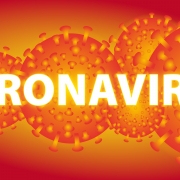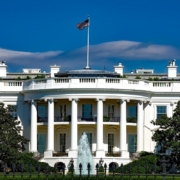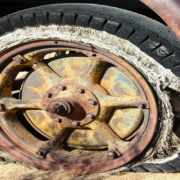Coronavirus exposes the extent of diversity in South East Europe
Image by Thanks for your Like • donations welcome from Pixabay
South East Europe has always been diverse, and this coronavirus induced economic crisis has only highlighted this fact. Whenever we emerge from the other side of this coronavirus, those differences will remain with us.
On many different levels the deep recession for which the outbreak of the coronavirus was the catalyst has exposed the full diversity of the region. EU membership, currency regimes and the fiscal response all illustrate the differences in the region, as do the reactions of politicians and their policy choices beyond economic issues.
The fact two of the six nations in SEE we cover are in the EU is a good starting point in seeking to tease out the differences between them.
EU membership means more tools to deal with crisis for Slovenia and Croatia
Even within the Croatia and Slovenia, the region’s two EU member states, there is a major difference in that Slovenia is in the eurozone (and has come out publicly in favour of a mutualised approach to fiscal policy in the EU, along with eight other nations), while Croatia still hopes to enter the precursor to full membership, the Exchange Rate Mechanism (ERM II).
The immediate benefits to Slovenia of being in the eurozone include not having to worry about managing the exchange rate and preserving FX reserves. At the same time, the European Central Bank’s Pandemic Emergency Purchase Programme (PEPP), worth EUR750bn means that central bank purchases of Slovenia’s government bonds keep the cost of borrowing down, creating extra space and credibility for the fiscal response to the crisis.
Croatia does not have the same luxuries at its disposal yet, compared to the rest of the region, the benefits of EU membership are still evident. The most visible form of benefit is the announcement of an EUR2bn swap line between the ECB and the Croatian National Bank (HNB). This came essentially a week after the ECB announced it was prepared to provide assistance in foreign currencies. This swap line is important when one considers that in March, the HNB has spent EUR2.2bn of its reserves in easing depreciation pressures on the currency. With this swap line, the amount of euros at the HNB’s disposal to defend the currency from excessive depreciation pressure is essentially back to where it was at the start of the pandemic. In the two weeks since the announcement of the swap line on April 15, the HRK has appreciated 0.8% against the euro.
Policy choices and an illiquid domestic financial market create room for manoeuvre for Serbia
The only other country in the region with policy space in the monetary sphere is Serbia, whose currency, unlike Croatia’s has not budged since the crisis began. A number of factors are at play here. First, the domestic financial market is shallow and illiquid. While the HNB bought HRK4bn in government bonds in mid-March as outflows from investment funds accelerated (mirroring general EM trends), in Serbia the entire industry is essentially rudimentary: there are not enough assets under management to generate a move in the currency.
While the government bond market in Serbia has developed nicely in recent years, the secondary market is also relatively illiquid. In any event, this has helped keep the EUR/RSD stable as non-resident investors have not had as many opportunities to exit their positions. Another factor is a rise in FX-linked borrowing by households and corporates to boost cash/working capital – in March FX-linked loans to households rose 17% yoy and while FX-linked loans to corporates rose 12% yoy. As this has lengthened banks’ FX-positions, they have bought RSD to square their positions, again contributing to EUR/RSD stability.
A related factor for EUR/RSD stability was the success of government debt managers in agreeing with investors to prepay the vast majority of an EUR1.5bn eurobond maturing this year. Namely, during 2019, the Office for Debt Management paid EUR1.3bn of principal to investors, leaving only EUR200mn to repay/refinance this year. This has proved to be a prescient move. And finally, Serbia has over the past few years greatly increased its holdings of gold. This too provides additional policy space for the central bank in managing the currency. With uncertainty over the extent of FDI inflows this year and a current account deficit of 7% of GDP last year, the likelihood is depreciation pressures on the currency will materialise at some point. Equally, Serbia through debt management and FX reserve management choices, has created room to manoeuvre for itself.
Bosnia Herzegovina, Montenegro and North Macedonia have less policy space available
Bosnia Herzegovina has a strict currency board and the EUR330mn emergency assistance it has received from the IMF is conditioned on the maintenance of that currency board. Montenegro and Kosovo use the euro as legal tender, but do not have access to the ECB’s balance sheet and North Macedonia has an even more illiquid financial market than Serbia and an even more rigid currency regime, which is also holding up well. All four countries have little to no room in the monetary policy sphere to assist their economies.
Slovenia’s direct fiscal assistance to the economy amongst the largest in the EU
In the fiscal policy space, Slovenia as the wealthiest nation with a solid fiscal position amongst Southern European countries and eurozone member has embarked on one of the EU’s largest direct fiscal support programmes to the economy.
Croatia has also not been shy in deploying fiscal policy to support the economy. Yet, unlike Slovenia, the HNB has to always keep one eye on the exchange rate when deciding its options. Fear of floating due to the highly euroised nature of the economy means that any attempt to assist the government in financing the deficit make depreciation pressure on the currency front and centre of any policy decision in this respect. That is why the EUR2bn swap line is of such importance, as it provides credibility for the central bank to embark down this route. The HNB’s purchase of HRK9.5bn in government bonds at the end of April and strengthening of the HRK in recent days underlines the value of the swap deal.
Fiscal policy space mirrors monetary policy space in SEE
Serbia too has so far earmarked over EUR5bn via fiscal policy of which EUR1.6bn is direct support for the economy. This too is credible. Namely, were it not, the RSD would have depreciated significantly, as in 4Q 2008 when it went from 79 to 100 to the euro. The one difference between Serbia and Croatia and Slovenia is the extent of EU assistance. To date, Serbia deems additional assistance from abroad as not necessary and has been able to rely on an EUR93mn package of assistance and medical equipment, while the latter two countries, as EU members, have already received significantly more direct assistance (quite apart from the direct assistance from the ECB as outlined above).
As in the monetary policy sphere, Bosnia Herzegovina, Montenegro and North Macedonia have far less fiscal space than Croatia, Serbia and Slovenia. They will get through this crisis relying far more on International Financial Institutions and the EU, although North Macedonia’s fiscal support package is somewhat larger. Indeed, the EU’s Macro Financial Assistance package for the region envisions EUR750mn in assistance for these countries, plus Kosovo.
As North Macedonia joins NATO, Serbia backs China
Perhaps the most glaring development in the region during the coronavirus pandemic is the overt support for China by Serbian authorities and the direct criticism of the EU response. Serbia has consistently followed a policy of keeping its options open, more so than any other country in the region, even as Montenegro and North Macedonia have become the 29th and 30th members of NATO, for example.
In our opinion, this policy is the result of a feature of the Serbian body politic where one part of society wants to join the EU, while another part is happier maintaining solid relations with the likes of Russia and China. This has the effect of cementing the status quo and slowing progress on important policy issues, such as EU accession. Here, developments on Kosovo over the past two decades have been an additional complicating factor.
These differences of opinion in society are not a recent development either: in the 19th and 20th centuries the Obrenović (closer to Germany) and Karađorđević (closer to Russia) royal families were also on different political sides. This means there is more uncertainty about Serbia’s EU accession path than one would ordinarily expect and events such the recent closeness with China risk complicating matters further.
This is not a trivial matter. Longer-term followers of the region will remember 2000, when all the talk was of Croatia and Serbia together joining the EU. Croatia’s first post-independence Social Democrat-led coalition government was sworn in in January that year and the October 5 revolution brought to power the erstwhile opposition in Serbia. Yet today, Croatia, for whom joining NATO and the EU was a strategic goal with broad support, has been a member of the EU for almost 7 years, while Serbia has opened a little over half of the negotiation chapters.
South East Europe has always been diverse, and this coronavirus induced economic crisis has only highlighted this fact. Whenever we emerge from the other side of this coronavirus, those differences will remain with us.







